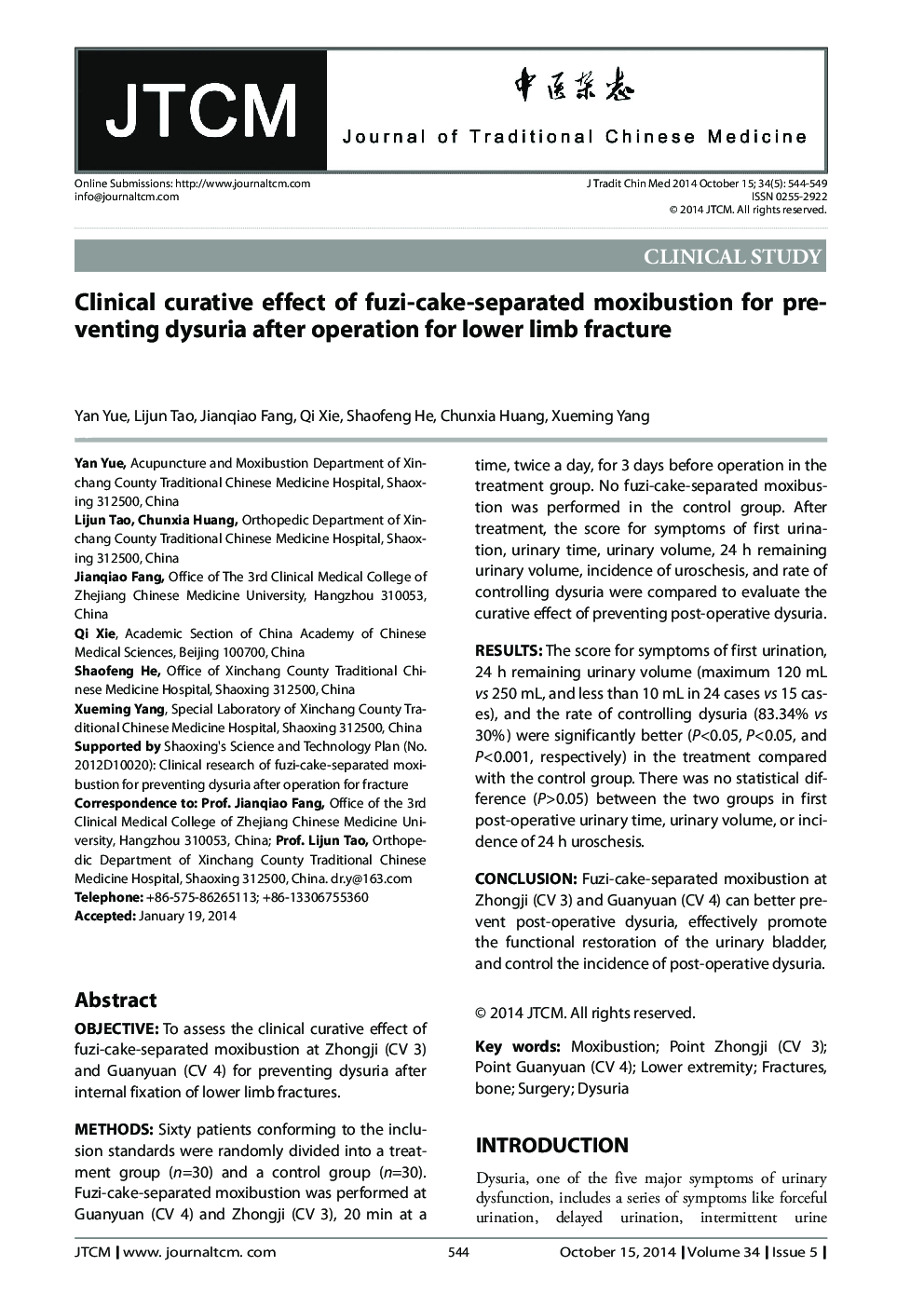| Article ID | Journal | Published Year | Pages | File Type |
|---|---|---|---|---|
| 4200999 | Journal of Traditional Chinese Medicine | 2014 | 6 Pages |
ObjectiveTo assess the clinical curative effect of fuzi-cake-separated moxibustion at Zhongji (CV 3) and Guanyuan (CV 4) for preventing dysuria after internal fixation of lower limb fractures.MethodsSixty patients conforming to the inclusion standards were randomly divided into a treatment group (n=30) and a control group (n=30). Fuzi-cake-separated moxibustion was performed at Guanyuan (CV 4) and Zhongji (CV 3), 20 min at a time, twice a day, for 3 days before operation in the treatment group. No fuzi-cake-separated moxibustion was performed in the control group. After treatment, the score for symptoms of first urination, urinary time, urinary volume, 24 h remaining urinary volume, incidence of uroschesis, and rate of controlling dysuria were compared to evaluate the curative effect of preventing post-operative dysuria.ResultsThe score for symptoms of first urination, 24 h remaining urinary volume (maximum 120 mL vs 250 mL, and less than 10 mL in 24 cases vs 15 cases), and the rate of controlling dysuria (83.34% vs 30%) were significantly better (P<0.05, P<0.05, and P<0.001, respectively) in the treatment compared with the control group. There was no statistical difference (P>0.05) between the two groups in first post-operative urinary time, urinary volume, or incidence of 24 h uroschesis.ConclusionFuzi-cake-separated moxibustion at Zhongji (CV 3) and Guanyuan (CV 4) can better prevent post-operative dysuria, effectively promote the functional restoration of the urinary bladder, and control the incidence of post-operative dysuria.
